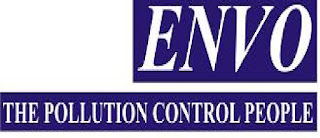ENVO IS MY BRAND & WAS BORN ON 1994. THE FOLLOWING IS THE STORY OF ENVO.
My career began with my respected Uncle Prof Dr. A.F.S.A.Aowal, I learned the ABCD of waste water treatment from him. I was working under him as part time lecturer at Delhi college of engineering, Kashmere Gate,Delhi .
Also, I was working as design engineer in National Associates, Delhi. I was staying in 27,Hayat manzil, Basti hazrat nizamuddin, delhi at that time.
ONE FINE MORNING IN 1994, I FOUND MYSELF ALL ALONE. EVERYONE WORKING WITH ME AT NATIONAL ASSOCIATE DESERTED ME WHOLESALE.
That first kick stunned me for three days and I sat at
banglawali masjid (Headquarter of Tabligh Jamaat) at basti Hzt nizamuddin for three days to find out my own
roots. A few like my Father Syed Ishtiaque Ahmad saheb, Prof Dr. Rashid Hayat Siddiqui saheb of AMU, Dr Chandra Prakash Ji , Vipan Kundra Ji etc gave me "MORAL" support. And M/s Syed Envo Protect (India) Pvt Limited, New Delhi was finally born in
1994....the ENVO brand was born in 1994. Mr.Vipan Kundra, my CA was one of the share holders.It is Vipan kundra ji who gave and registered the name Syed Envo Protect (India) Pvt Limited even without consulting me,because I was in Assam at that time. He told me that one day I will become international ,thats why he added india to the name.
Later I opened one another company by the name of Envo Projects, New Delhi which is still continuing by the grace of God when the private limited company was dissolved due to various reasons.
I received my first career break of my company Syed ENVO PROTECT (I) PVT LTD , a consultancy at rupees five thousand only
at M/s Shade and colors in okhla industrial area phase –I of owner Mr.Deepu Marwah.
It’s a cloth dyeing factory.
I left my part time lectureship job in Delhi
college of engineering, kashmere gate, delhi just to concentrate on my own company ENVO. Each and Everyone called me "lunatic" at that time as
nobody was doing full time consultancy in water and waste water treatment in 1994,
almost everyone had a govt job. Only gupta ji of Ghaziabad and a few are in the market as full timers. So i jumped at a completely unknown thing with full confidence in GOD AND MYSELF.At that point of time nobody imagined that this
pollution control sector will grow such like this. I created a tag line for my
company “THE POLLUTION CONTROL PEOPLE” which i still use in my letterhead.
Many companies are created later on with my credentials and full support by the grace of God. Now i have taken it for granted. I mean, its natural to have a new team after each two three years.So i never try to stop people,anyway they will go , so let them go and try their own luck, good for them, good for me also..But this time as a safety device i have retained my own company "Envo Projects" under my sole control (Owner) so that i can fall back. People always learn from mistakes. Life is the best teacher.
AND NOW TODAY(09/10/2011), FROM MY HEART I THANK ALL MY CO WORKERS WHO ARE WITH ME NOW AND WHO LEFT, WITHOUT THEIR BLOOD AND SWEAT ENVO PROJECTS WOULD NOT HAVE BEEN WHAT IT IS TODAY.BECAUSE ITS MY LEARNING CURVE TOO. I ALSO MADE MANY MISTAKES DURING THE GROWTH AND LEARNED FROM IT. Change your attitude towards life. Do not look for
perfection and CONTROL in everything in life. I
understood that my livelihood (RIZQ) cant be taken away
by anyone. Put
your best efforts in what you do and than leave the
result to ALLAH. I have plan but Allahs plan is much much better than mine. I
have firm belief in ALLAH.
During this journey many people came and left me. I thank
all of them for their contribution for my growth. They are destined to be with
me for that particular period. This is Allah’s plan.
Always sleep with a clean heart. I know many of us get
wronged throughout the day or have gotten wronged in the past. Forgive. Not
only forgive, but forgive and forget. Dont even hold a grudge against that
person in your heart. Keep your heart completely pure.Forgive brothers and
sisters before you sleep each night. this is one of the practices of the
greatest people ever to live and this is how we will reach those highest levels
of spirituality.
Forgiveness is good for your own well being, its
about giving yourself permission to let go of the painful past. Forgiveness is
not something we do for that particular toxic person,it is something we do for
ourselves so we can move on to a better future.We forgive,not because that
toxic person deserves it,but because we deserve peace, for a pure heart.
MY STRUGGLE STORY PUBLISHED IN YOURSTORY.COM
Also read please same story in my blog







